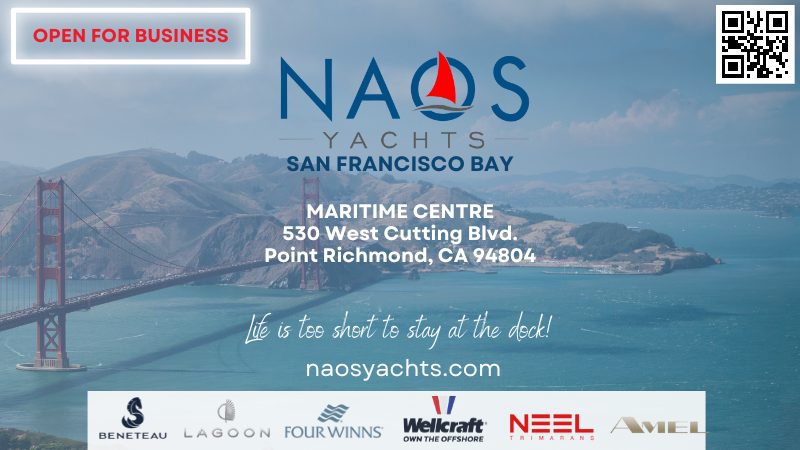
San Francisco Bay Sailing on Sunny Saturdays
We’re looking forward to another nice weekend on the Bay. The 315 boats signed up for Saturday’s Three Bridge Fiasco should have a challenging but pleasant time getting around the course. For everyone else, it should just be a nice day of sailing.
In our recent podcast with Dr. Paul Heineken, he mentioned how much fun he, Johnny and Erika had while sailing on 29ers. We wondered how many are still sailing the Bay. We then came across two sailing in Raccoon Strait last Saturday. We caught a few other shots of boats just looking good while enjoying light, warm January breezes.
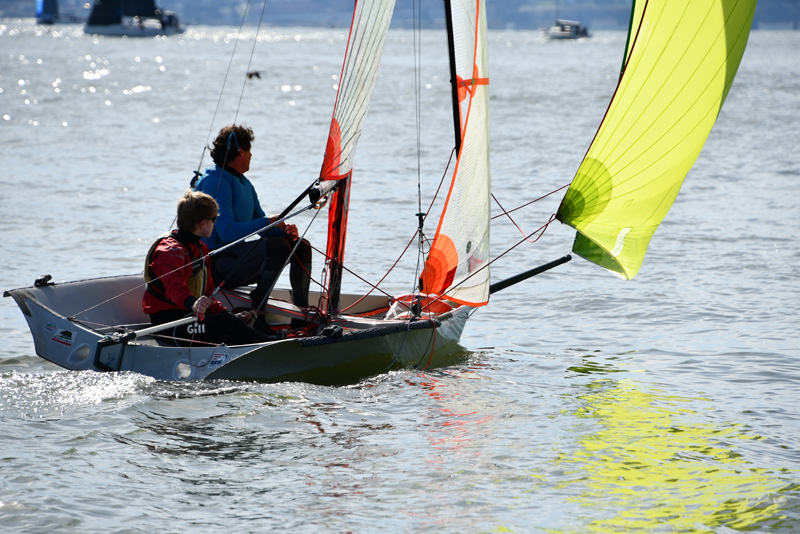
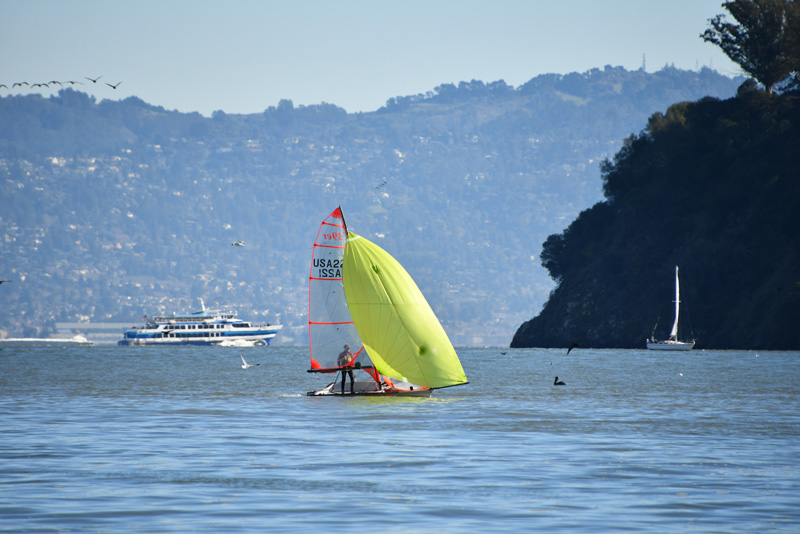
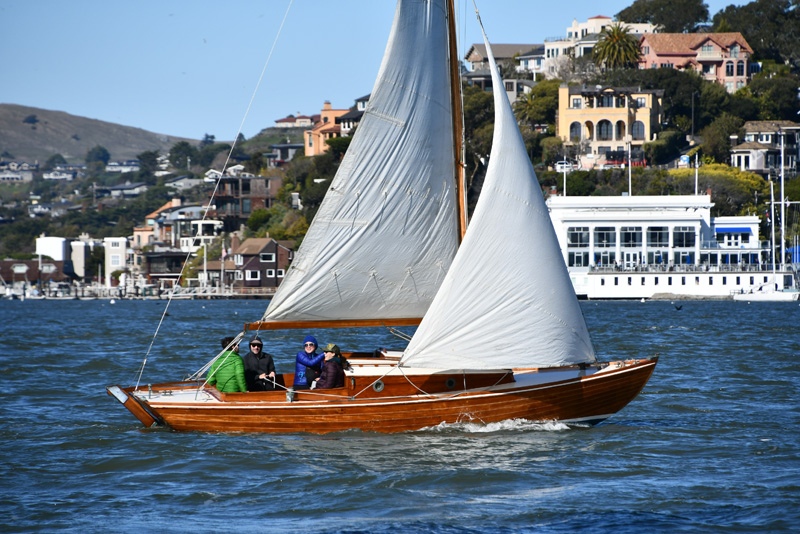
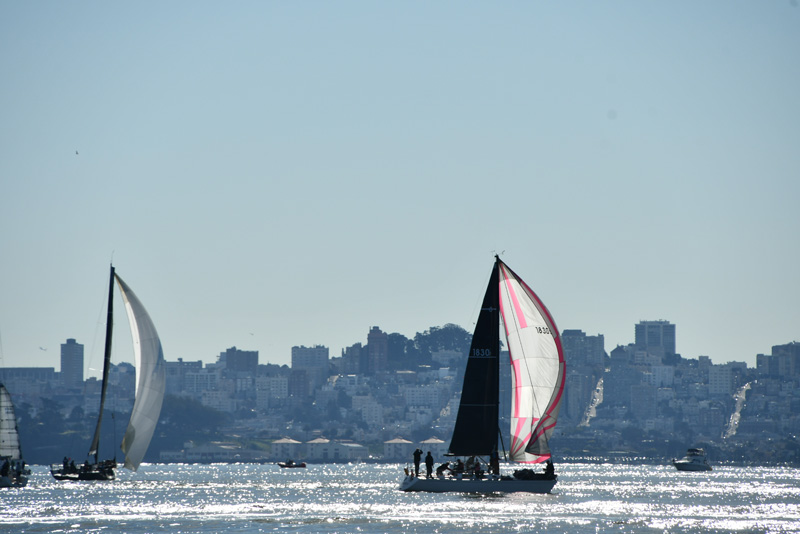
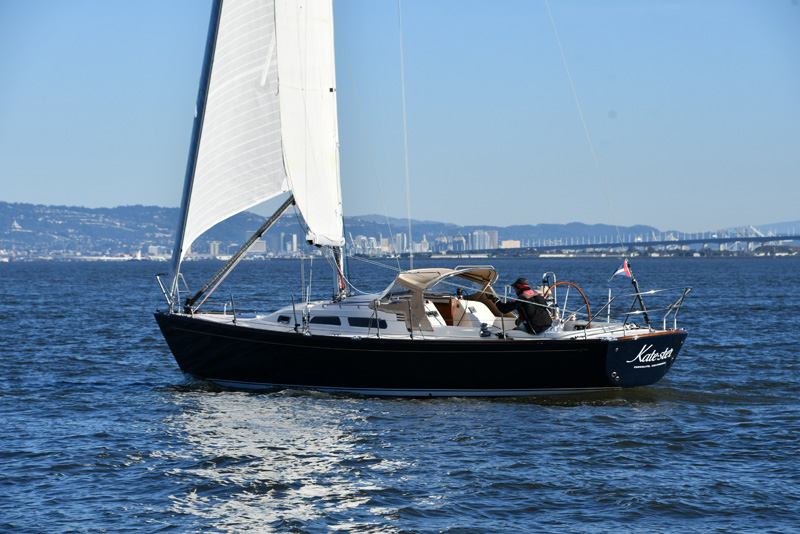
Look for these photos in next month’s Sailagram, along with any you send to [email protected].
Remember the Music and Help Create the All-Time Best Sailing Playlist
Last week we shared the news that David Crosby of Crosby, Stills and Nash had died. He was 81 years old. While the news has been circulating all over the internet, we’ve been intrigued and inspired by all the comments left by our readers. While some refer to their crossing of paths on the water, or in a boatyard or marina, many readers reflected on Crosby’s music that made their sailing years all the more memorable. Valerie Soper summed it up nicely when she wrote, “We, as Baby Boomers, are blessed to have this beautiful music bookend our journey from launch (of awareness) to the end of our voyage on the other shore.”
While we could sit here for hours writing an extended sailing eulogy for Crosby, that’s not the purpose of this post. Besides, the emotion and insight that you, our dear readers, have left on the page are far more interesting than any easy-to-find information we could dig up from the internet. Instead, we decided to use this as an opportunity to curate a sailing playlist. Not just any old playlist dreamed up by Spotify or Apple Music bots, but one that is made up of your personal favorite sailing songs. We can understand if your list is long, but in the interest of getting this done, we ask you to list only your top three — your all-time, most-listened-to, never-get-tired-of, top three sailing songs. (It’s pretty clear that Southern Cross will make the final cut.)
For those sailors who are usually happy to skip the music and just listen to the wind or the jabbering of the crew, here are a few songs you might like to consider.
(Sittin’ On) the Dock of the Bay – Otis Redding; Son of a Son of a Sailor – Jimmy Buffett; Sailing – Rod Stewart; Sailing – Christopher Cross. Here’s a cool version of Jimmy Buffett’s A Pirate Looks at Forty, performed by Jack Johnson, Dave Matthews and Tim Reynolds. We could add more, but we want to hear about your songs — no decade or genre is excluded.
One more thing about David Crosby. Apparently he did not write Southern Cross and had a limited involvement in its original recording. (You can look up the reasons why.) He did, however, write Wooden Ships, together with Paul Kanter of Jefferson Airplane, while aboard Mayan,
We leave you with this YouTube clip of Wooden Ships, which visually has nothing to do with the song, but, if you were at Woodstock, might bring back some memories… or not.
Drop your three favorite sailing songs into the comments below.
Naos Yachts Opening In San Francisco Bay Area
Alert for Sailboat ‘Unicorn’ Possibly Adrift in Pacific
We know there are often sailboats that lose contact with shore, and that friends and loved ones share their details in hopes of a successful sighting and recovery. We don’t always share the news in such situations, but in this case, the alert about a sailboat named Unicorn caught our attention. We thought perhaps we could help by alerting our friends currently cruising in Mexico and the Pacific.
The details are sparse, but it appears that Unicorn, with possibly only one soul aboard, has encountered problems at sea and is by now likely disabled and adrift.
The alert appeared on the social service Facebook page Carlos Alfredo Godinez León and reads (in translation):
“Social Service: #BCS #PacificoNorte #SOSVelero #Unicornio #SEMAR #CapitaniadePuerto #Embarcacionesenlazona this day Thursday January 26, 2023, help alerts were received for a vessel, type sailboat named Unicorn, which is located in the Pacific, its crew report that it is [taking on] water and presenting flotation problems, is losing energy, at any time can go out of communication. Caution is recommended when browsing and being in contact with SEMAR, ENSAR, CAPTAINTY AND local authorities#PrevenirEsVivir #ProteccionCivilSomosTodos #AyudarParaAyudar #ABVVBCS”
We translated some of the acronyms and hashtags as follows:
#BCS = Baja California Sur
Velero = sailboat
#CapitaniadePuerto = port captain
#Embarcacionesenlazona = boats in the area
SEMAR = Secretaría de Marina = Secretary of the Navy
ENSAR = Estaciones Navales de Búsqueda y Rescate = Search and Rescue Stations of the Mexican Navy
#PrevenirEsVivir = Prevention Is Living
#ProteccionCivilSomosTodos = We Are All Civil Protection (perhaps equivalent to It Takes All of Us)
#AyudarParaAyudar = Helping for Helping (or Assisting)
An earlier post stated that the last communication with Unicorn was at 11:30 a.m. (presumably Thursday), at which time the vessel was located at “Lat 25 28.9 N, Long 114 18.5 W.”
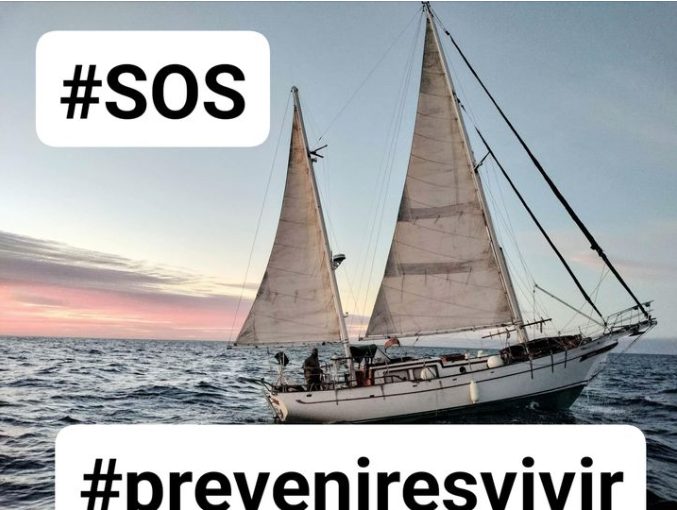
The alert was accompanied by a map of sorts, of Unicorn‘s last known location.
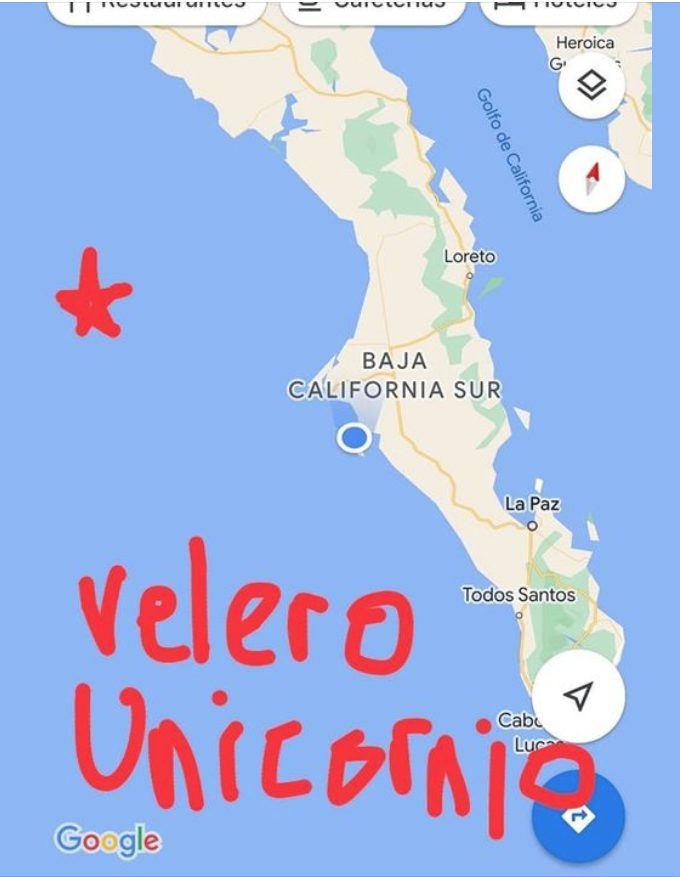
The Painfully Slow but Slightly Encouraging News About Green Ships
Great news! Well, maybe. The maritime industry seems on the verge of a breakthrough in so-called green propulsion. Well, possibly.
For the last several years, there have been bold headlines and exciting concept drawings of state-of-the-art commercial ships featuring auxiliary wind or green-fuel options. At the same time, the fleet of fully electric vessels, which are seeing steady increases in range and power, is on the rise. A number of maritime leaders — including the world’s largest shipping company — have multiple vessels under construction as we speak.
Is the future now? Is the future soon? Or will the future forever be on the horizon, blurry and ungraspable?
Stories announcing new technology are fraught with peril, as reporting on “the next big thing” often ages poorly. (Anyone reading this story on Google Glass?) As markets and new innovations sort themselves out, it’s unclear what will emerge, but it’s easy to get caught in the fervor of what might be. When it comes to lower-emission commercial vessels, it does appear as if some kind of change is approaching. Well, we think.
Rather than try to predict what might be on the horizon, we can only wonder if we are approaching a tipping point. At the moment, businesses that want to invest in alternative propulsion are faced with steep costs, but many of them have still made the choice to go greener. When will there be a critical mass of new of wind-assisted and/or alternative-fuel ships that shift economies and the scales of production in a meaningful way to offer efficient and lower-cost alternatives?
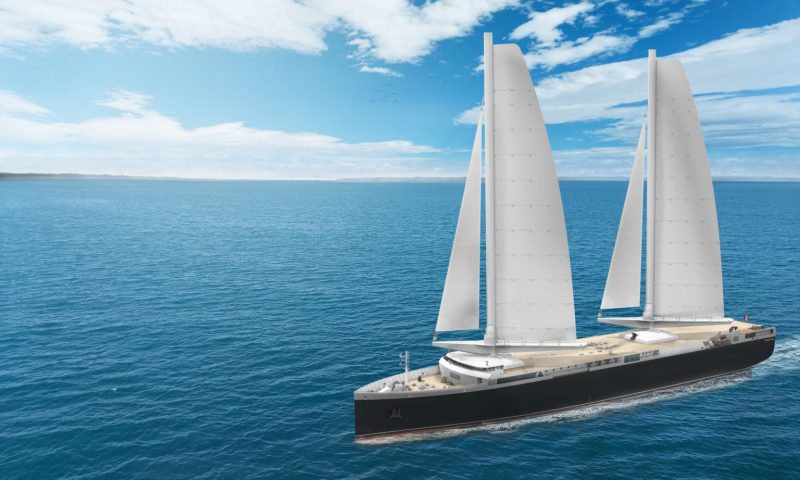
Green Wind Assist
In 2019, we asked, “Will there be a new age of sail in the shipping industry?” At the time, there were some encouraging trends. “From a [global] fleet size of around 60,000 ships, roughly 10,000 could be using wind by 2030,” Gavin Allwright, the secretary of the International Windship Association, told us a few years ago. (Another source puts the global fleet size closer to 90,000.)
“Enthusiasm for wind power is growing,” according to an August 2022 article by the Washington Post, which laid out some of the exciting but small-scale alternatives. (The Post’s article reads like every story we’ve ever written on the subject: There are encouraging trends, enthusiasm and a handful of ships experimenting with alternatives, amounting to a mere drop in the bucket compared to the diesel-powered fleet.) Allwright told us in 2019 that once about 100 wind-assist installations are made, “We will start to see a self-sustaining growth developing along with production costs starting to drop and economies of scale starting to be felt.”
Keep in mind that any wind-assisted ship will still have diesel engines; sails and kites only offer mariners the chance to throttle back, just a little, which can actually result in large reductions of emissions.
Here are a few recent(ish) announcements on the wind-assist front:
— Last year, Swedish shipping consultancy Wallenius Marine was enlisted to design what was then the world’s first wind-powered roll-on/roll-off vessel. (The French ship pictured above appears to be the second of its kind.) The 7,000-car-capacity vessel will operate at speeds of 10-12 knots while under sail, “or faster using a supplemental power system.” The concept seeks to reduce emissions by as much as 90 percent, and will be “ready for the high seas by 2025.”
— AlfaWall Oceanbird, another Swedish company, said that it will launch a fully wind-propelled ship in 2026, according to the Washington Post. (Link above.) The company currently uses “wing rigs” on some ships, which appear similar to a concept by the Bay Area based Wind + Wing Technologies. “If we’re going to change the world, we need to change the 90,000 vessels that are already sailing today,” the managing director of AlfaWall Oceanbird told the Post.
— A few companies are producing kites that are flown off ships — a concept that is at least a decade old. In 2008, the German company SkySails installed six kite systems on large freighters, but the idea never took root. “The commercial-shipping industry has no money for new, forward-thinking technology,” Sven Klingenberg, the cofounder and head of sales at SkySails, told us a few years ago. He added, “The human factor was a decisive thing. If [mariners] are strictly like truck drivers bringing freight from A to B and have no passion for sailing and kiting, that was the number one blocking factor.”
The French company Airseas also created a kite for auxiliary power on ships, which could reduce “emissions and fuel consumption by 20% on average,” the Washington Post said.
Green Alternative Fuels
Over the past few years, most of the headlines about green ships centered around the commercial-maritime industry. Apparently, the cruise-ship industry is getting in on the act as well.
In December 2022, the New York Times reported: Hydrogen-Powered Ships Are Coming. How Green Is Your Cruise? “Viking, a luxury line whose passengers tend to be wealthy and college-educated, said it is building ocean ships that will run on hydrogen fuel cells, an investment that will cost the company an additional $40 million per ship. Royal Caribbean Group, a behemoth in the industry which owns three cruise lines, said it will launch a ship in 2023 that will be equipped with ‘a large-scale, hybrid power source,’ a combination of fuel cells, batteries and dual-fuel engines that use liquefied natural gas.” Last year, the liquefied natural gas-powered, 1,110-ft, 4,000-passenger Disney Wish set sail from Port Canaveral, Florida.
The Times said that cruise lines have touted LNG as a cleaner alternative fossil fuel compared to heavy fuel, or bunker fuel; LNG can act as a stopgap until a more sustainable energy source becomes available, cruise lines have said. “But environmental groups said methane, the primary component of natural gas, traps even more heat in the atmosphere than carbon dioxide emitted from heavy fuel. ‘LNG is totally a false solution,'” an environmentalist told the Times.
This kind of news exemplifies the incredibly slow, two-steps-forward, one-and-a-half-steps-back trend that is the green-ship movement: A huge company with a fleet of hundreds of vessels has ordered one or a small handful of ships that should be in use in the near future. This fraction of the fleet will certainly be greener, but not necessarily fully green — and perhaps not that green at all.
With that said, there are a few LNG commercial ships that have recently hit the water:
— Pasha Hawaii took delivery of the 774-ft MV George III last year. It’s the first LNG-powered ship on the US West Coast and the first to serve Hawaii.
— Last year, the Brussels Express, a 15,000 TEU container ship, became “the first large containership in the world to have been converted to liquefied natural gas (LNG) propulsion,” according to Marine Link.
Both ships are “dual-fuel,” meaning they can also burn diesel.
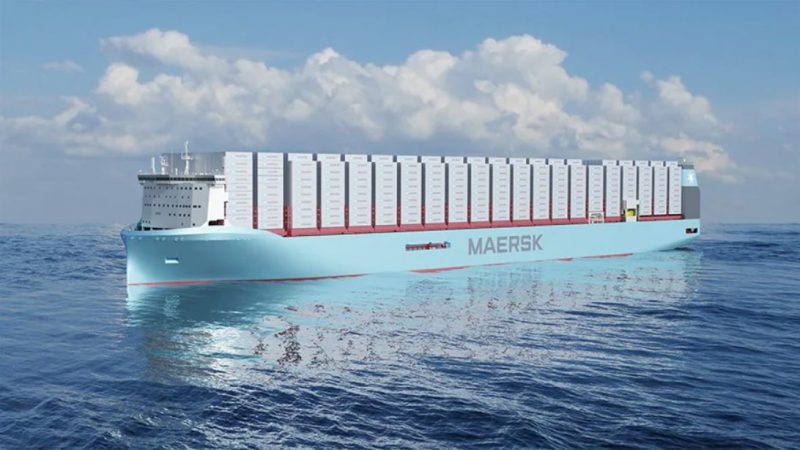
Hydrogen seems to be among the most promising alternative fuels. Last year, we reported that Berkeley Marine Center was looking at repowering small vessels with electric motors that could be run by hydrogen fuel cells, as well as batteries. “I had been searching for a hydrogen fuel cell for 25 years,” Cree Partridge, the owner of BMC, told us. Partridge partnered with the Berkeley-based PowerUp, and refit a 1940 wooden Spitsgatter as the inaugural hydrogen-powered vessel.
Partridge envisioned an “on-site electrolysis method” at BMC, using solar panels to create electricity, which releases hydrogen from the water molecule. The hydrogen then gets compressed and put into containers. This method describes green hydrogen, but the gas is most commonly made by using fossil fuels; grey hydrogen is produced from natural gas or petroleum, and brown or black hydrogen is produced from coal.
The first question, then, for any company purporting to use hydrogen is: How is it made? The alternative is only as good as its source.
Green Electric Vessels
— On January 9, Singapore-based Sembcorp Marine delivered the final completed unit of three identical, fully battery-operated roll-on/roll-off passenger ferries for Norwegian ferry operator Norled.
“The zero-emission vessel will be capable of operating at a service speed of 10 knots, powered by lithium-ion batteries which are charged using green hydro-electric power,” according to Offshore Energy Biz. “The ferry can also run on a combined battery-diesel hybrid backup mode as required.”
— Last year, the 195-ft, 200-passenger fully-electric ferry Ellen set the distance record for a single battery charge at 50 nautical miles. “The company [Danfoss] is so proud of the achievement that they plan to submit it to Guinness World of Records,” The Maritime Executive Said.
Bravo on the achievement. This bodes well for the future (we think), but also illustrates just how painfully slow and incremental these baby steps are, and how far there is to go toward true sustainability.

